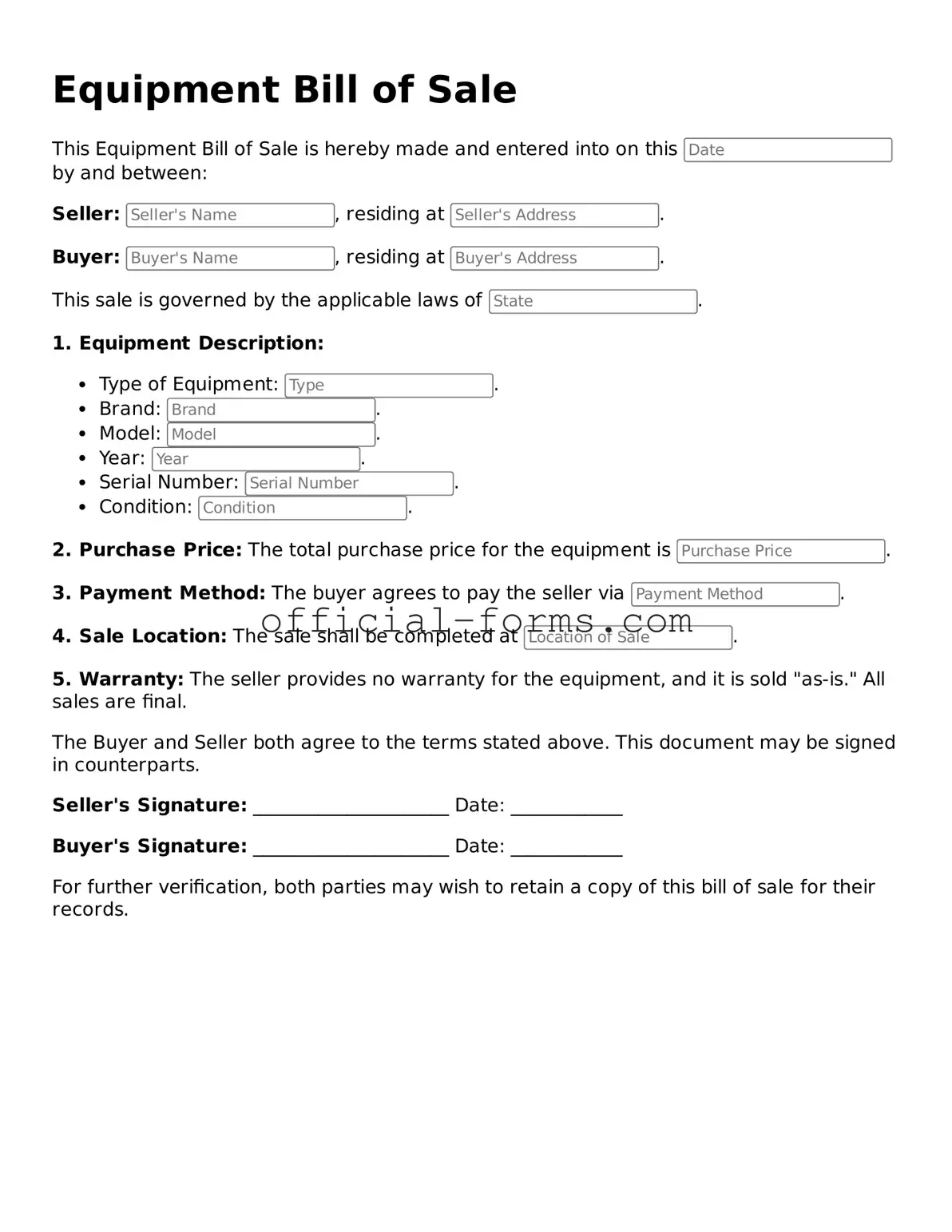Attorney-Verified Equipment Bill of Sale Template
An Equipment Bill of Sale is a legal document that serves as proof of the transfer of ownership for equipment between a seller and a buyer. This form outlines essential details such as the description of the equipment, the sale price, and the date of the transaction. Understanding its components can help ensure a smooth transfer and protect the interests of both parties involved.
Open My Equipment Bill of Sale Now
